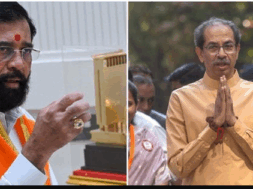
Why Many Indians Die Rich but Don’t Live Rich?
Aakarsh Dalmia – Certified Financial Planner CM
Imagine playing a video game where you collect coins for treasures. You spend all your time chasing those coins, but before you get to unlock the treasures, the game ends. This is what happens to many Indians—they work hard, save diligently, build wealth, but when it’s time to enjoy it, they’ve run out of time. Many Indians Die Rich but don’t Live Rich, missing the very moments they’ve worked so hard for.
Living Rich vs. Dying Rich
What does it mean to “live rich“? It’s not about having luxury cars or mansions. Living rich means living with comfort, peace of mind, and experiencing the joys of life—like family vacations, hobbies, and moments of celebration. For instance, someone might have millions saved up but might have never splurged on a trip with their family or enjoyed a hobby they always wanted to pursue. On paper, they’re rich, but they’ve missed out on living richly and experiencing the life.
Time Buckets: A Strategy for Living Rich
To avoid the trap of dying rich and not living rich, we can apply the concept of “time buckets.” This idea allows you to break down life stages into different time buckets to plan for enjoying life experiences. For example, one can have block of every 5 years or 10 years as one time bucket. Here are a sample time buckets for you.
- Youth (25-40 years): This is the stage where you are setting out to work and start earning, laying a strong foundation of savings and investments to planning for a family, aiming for the promotion. You have high energy, curiosity, and a desire for travel and adventure. Adequate insurance keeps you on financial track, while you enjoy life and start building the wealth.
- Middle Age (40-60 years): While responsibilities grow, this life stage can be bucketed to fortify your savings and retirement wealth accumulation balancing it with enjoying life with family, provide for children higher education and go for your own hobby and passions and ticking off some of your bucket list entries.
- Retirement (60 years and beyond): You have more time and money, but energy levels decrease, making certain experiences less enjoyable but then you will have so much time to always cherish on life memories and stay at places, where you always wanted to. Time to extend financial help to your dependents and relatives, plan for your legacy, spending time with your expanded and extended family.
Let us understand with the below two case history
Living Poor – Retiring Rich: Consider the story of Rajesh, a businessman who saved aggressively in his 30s and 40s, building a large portfolio of properties and mutual funds. By the time he turned 65, he had amassed ₹5 crore in wealth. However, when asked about his dreams, Rajesh mentioned he always wanted to travel with his wife to Africa and to explore wildlife photography. But now in his late 60s, with health issues and less energy, those dreams felt distant. Despite his wealth, Rajesh realized he had saved too much but lived too little.
Living Rich – Retiring Rich: Or take Priya, a software engineer, who decided to take family vacations regularly. She saved for the future but made sure to spend on annual trips, celebrating milestones with her children and parents. By 50, Priya had traveled to 15 countries with her family, and while her savings were enough as per her retirement goals, her life was filled with joy and memories.
So, how do you avoid this dilemma? The key is balance and knowing your numbers —saving for tomorrow but also spending on what brings joy today. Here are two critical points to consider:
- Save for the future: You need to build wealth for retirement, healthcare, emergencies and for passing the legacy.
- Spend for the present: Don’t forget to enjoy the present moment—whether that’s traveling, learning a new hobby, or spending quality time with loved ones.
Asset Building vs. Enjoying Life Now

Many Indians focus heavily on building long-term assets like real estate, gold, or investments in mutual funds. While this is important, it often comes at the cost of immediate enjoyment. Having multiple properties and assets might make you feel financially rich, but if you don’t set aside money for living today, what’s the point?
Instead, your financial plan should allocate some portion of your wealth towards experiences. For instance, instead of investing every rupee into long-term assets, set aside a “fun fund” for yearly vacations, passion and hobbies and ticking off your bucket list items.
I am Living Rich and also setting myself to Retire Rich: I am only 28 and have travelled to more than 10 international destinations, which includes leisure trips, family trips and ticking off my bucket list items like watching Soccer World Cup in Russia, visiting my favorite soccer club ground in Manchester -UK, Witnessing El Classico game in Madrid -Spain, walking on great wall of China, Praying at Pashupatinath temple in Kathmandu, Visiting Times Square in NY-USA, Beach holiday in Bali – Indonesia, Visiting the Pope abode in the Vatican City, Colosseum in Rome- Italy and many more…. But at the same time, I am also saving for my future and accumulating wealth for myself and my future generation.
Conclusion: Live Rich at Every Stage
Dying rich but not living rich is like growing a garden full of flowers and never taking the time to smell them. Financial security is important, but so is experiencing and enjoying life along the way.
By balancing saving and spending, you can ensure you live richly at every stage of life. Plan for tomorrow, but live for today. After all, true wealth is not just in your bank account—it’s in the memories, experiences, and joy you collect along the way.Top of FormBottom of Form
Aakarsh Dalmia is a Certified Financial PlannerCM and a AMFI Certified Mutual Fund Distributor. You may contact Aakarsh Dalmia on 90513-55120 or email him at aakarsh@dalmiafinserv.com. Visit website for more www.dalmiafinserv.com
Disclaimer: This article is for educational purpose only. Readers are advised to take their own decision about their life

















